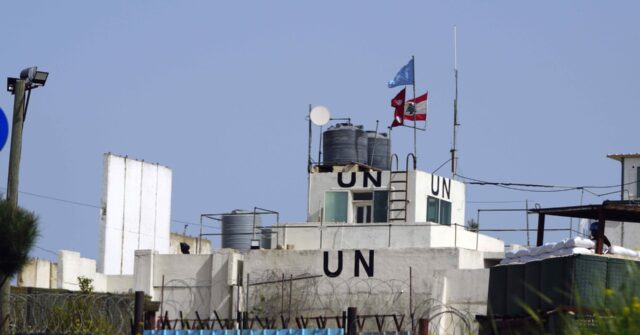On Thursday, two soldiers from the United Nations Interim Force In Lebanon (UNIFIL) sustained injuries due to gunfire from the Israeli Defense Forces (IDF). This incident occurred as IDF troops were targeting Hezbollah militants near a UN base, highlighting ongoing tensions in the region. UNIFIL was established to prevent Hezbollah from operating in southern Lebanon and to remove unauthorized weapons, as mandated by several United Nations Security Council resolutions, notably resolution 1701 from 2006. However, critics argue that UNIFIL has consistently failed to fulfill this mission, allowing Hezbollah to establish a significant military presence in the area. As a result, southern Lebanon has been transformed into a launchpad for attacks against Israeli and Arab civilians in northern Israel.
The IDF acknowledged the injuries to UNIFIL personnel but asserted that Hezbollah purposely positions itself close to UNIFIL outposts to use them as shields during conflicts. The IDF emphasized that it had communicated with UNIFIL troops, instructing them to take cover before opening fire. This incident highlights the complexities of engagement in the area, where both regional militias and official military forces interact. Hezbollah’s strategy of concealing its operations within civilian and UN-protected regions complicates military responses and raises concerns about civilian safety. The IDF’s operations in southern Lebanon are ongoing, and they maintain a steady line of communication with UNIFIL to mitigate risks during their missions.
In addition to seeking to neutralize threats from Hezbollah, the IDF has focused on dismantling the group’s military infrastructure in the region. Israeli forces have reportedly taken control of several villages in proximity to the border that have been associated with Hezbollah’s activities. These operations include confiscating stockpiled weapons and demolishing tunnels and rocket launchers that have been established over the years, largely with Iranian support. The IDF’s actions illustrate not only a defensive posture against ongoing threats but also an offensive strategy aimed at degrading Hezbollah’s military capacity.
The situation surrounding UNIFIL is further complicated by its historical struggles in enforcing the mandates set forth by the United Nations. With Hezbollah’s continuous military buildup and the apparent inability of UNIFIL to restrain these activities, many have called into question the effectiveness of this peacekeeping mission. Critics argue that the UN’s prolonged presence has not led to significant disarmament of Hezbollah or enhanced security for the region, making it difficult to assess the value of continued UNIFIL operations. The juxtaposition of its mission with real-world outcomes raises discussions about the future of international peacekeeping efforts in conflict zones.
Moreover, the IDF’s comments regarding their interactions with UNIFIL indicate a broader strategic framework within which these forces operate. While UNIFIL is mandated to maintain peace and stability, Israel’s military objectives illustrate a focused campaign against threats emanating from Hezbollah and its military capabilities. This divergence of interests between military operations and peacekeeping efforts places both UNIFIL and Israeli officials in a precarious position, as they navigate the realities of entrenched hostility and military escalation.
In summary, the recent incident involving UNIFIL and the IDF underscores the ongoing violence and the challenges facing peacekeeping operations in southern Lebanon. The persistent presence of Hezbollah and its military activities complicate UNIFIL’s mission, raising questions about the effectiveness of international peacekeeping in volatile regions. The IDF’s proactive measures against Hezbollah, while intended to safeguard Israeli territory and civilians, demonstrate the intricate dynamics at play. The situation remains fluid, with potential for further escalation as both Israeli military efforts and UN peacekeeping responsibilities continue to shape the landscape of the Israeli-Lebanese conflict.

